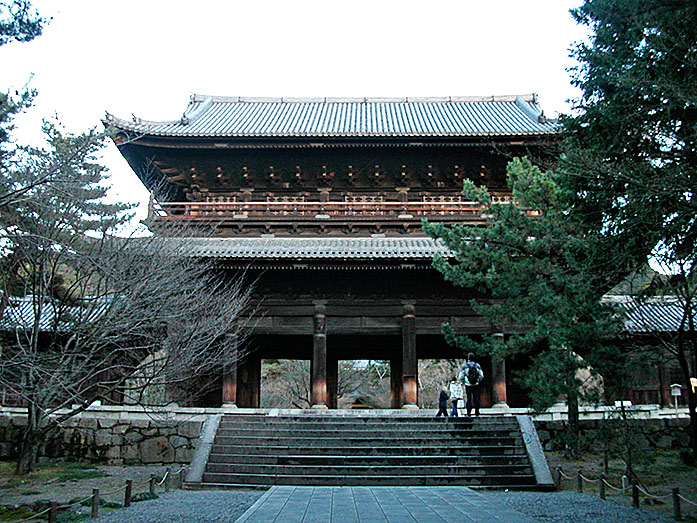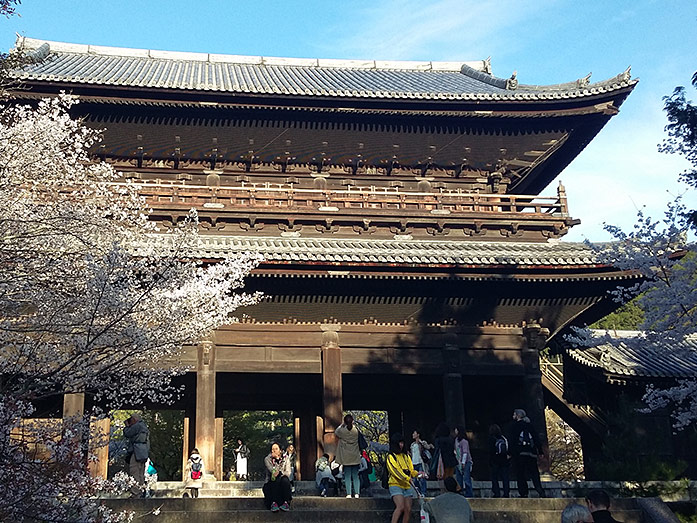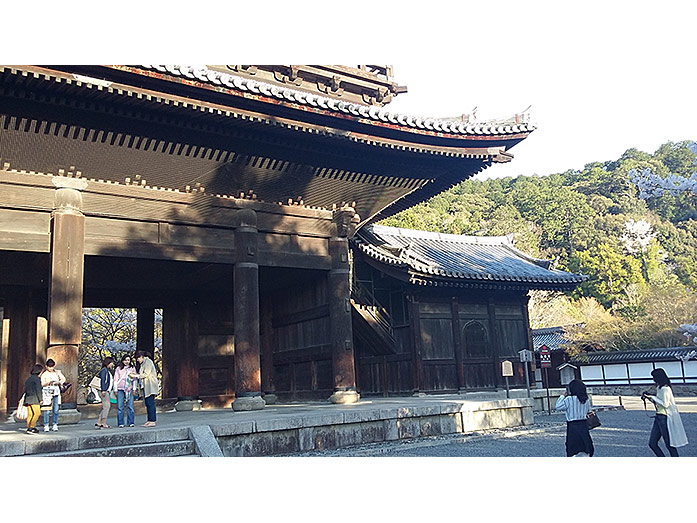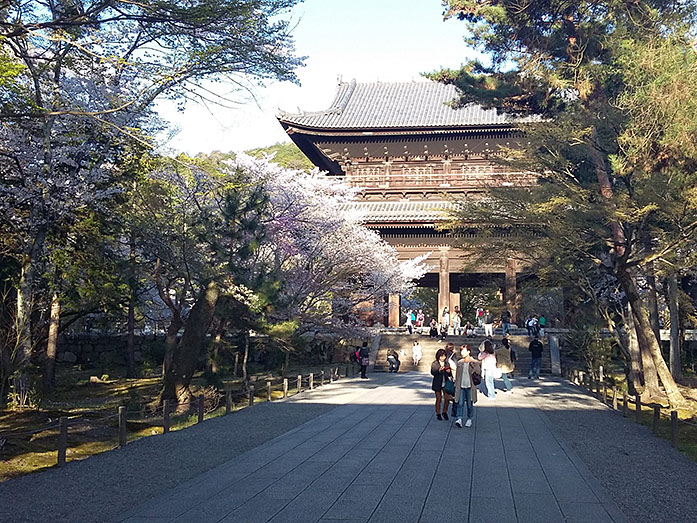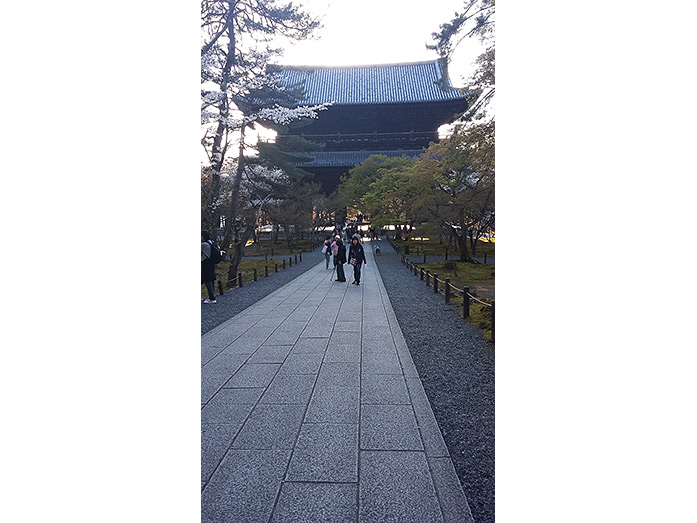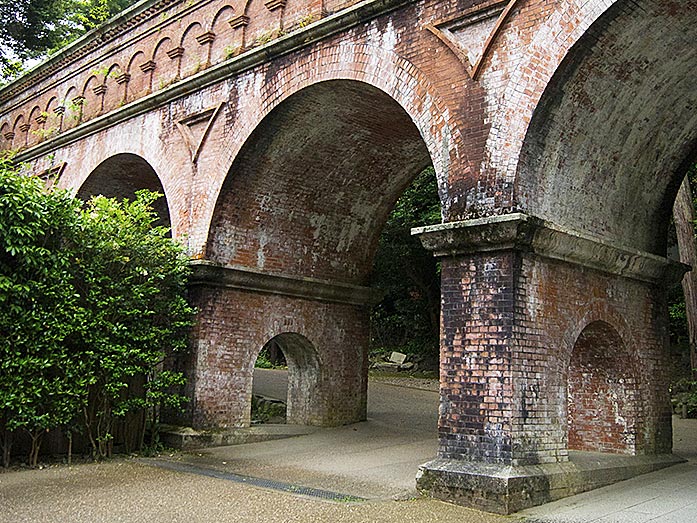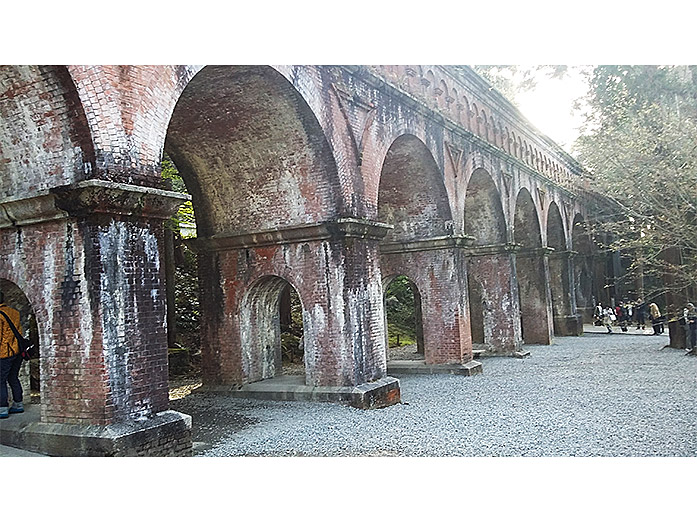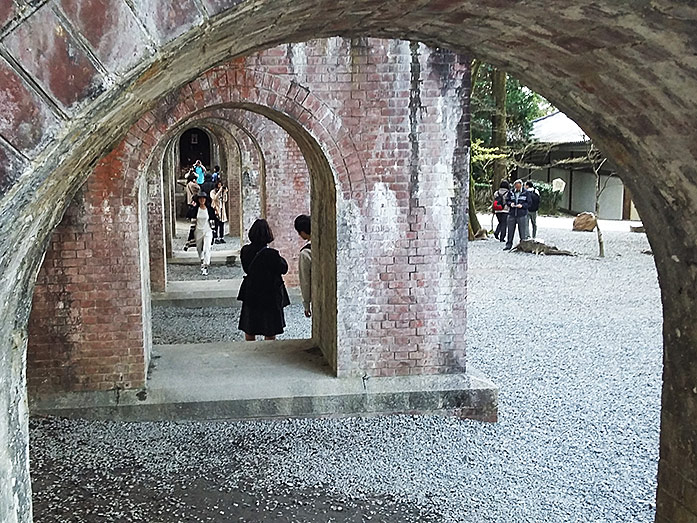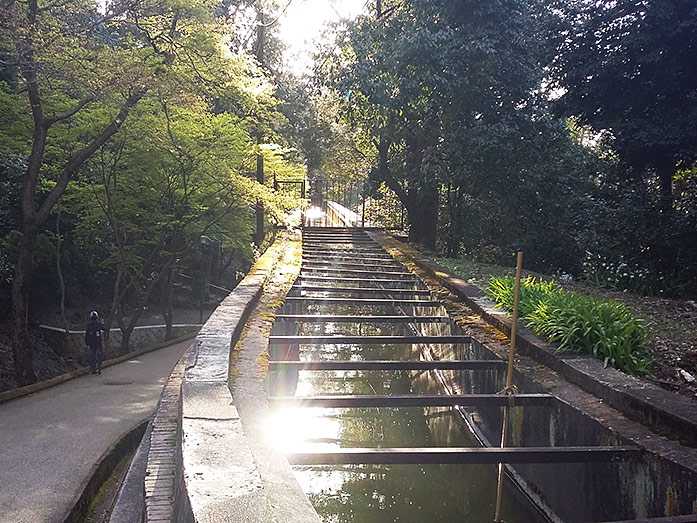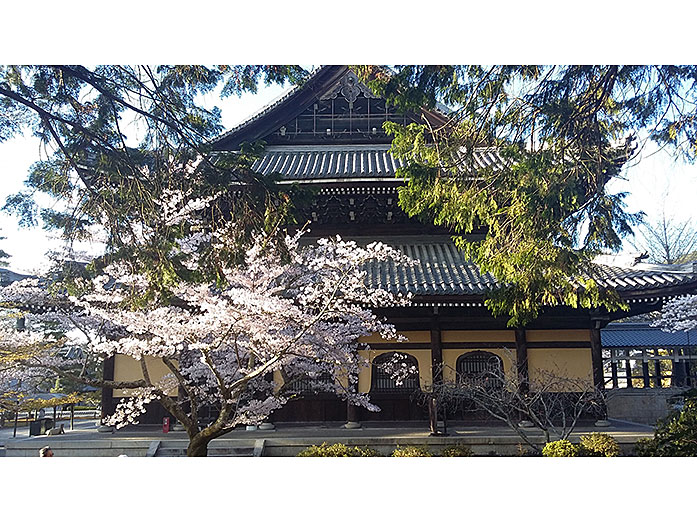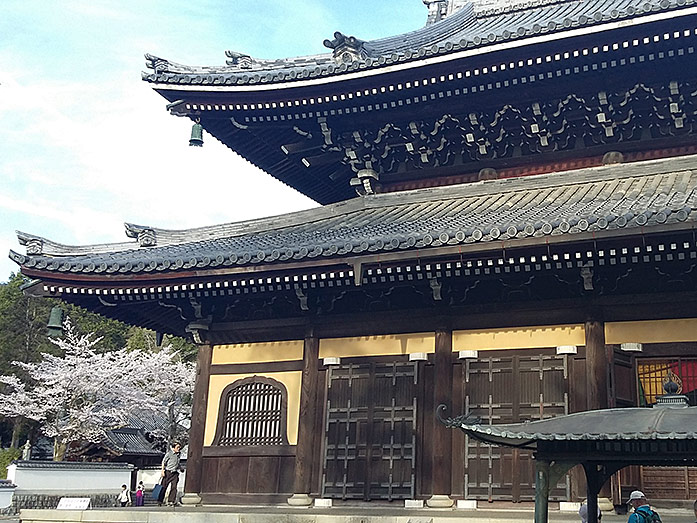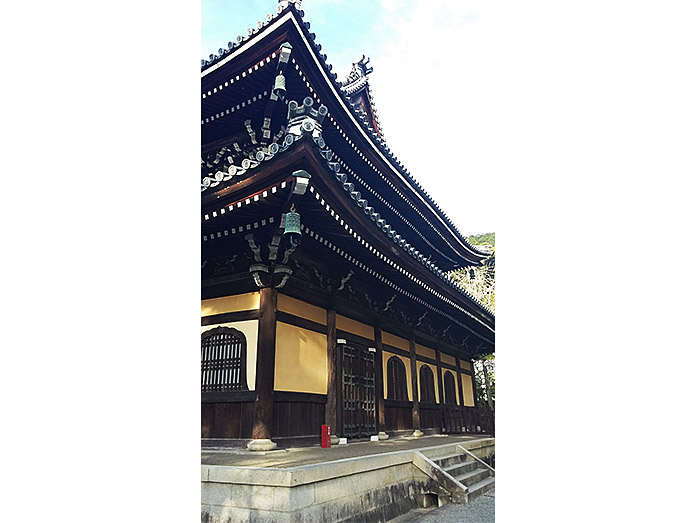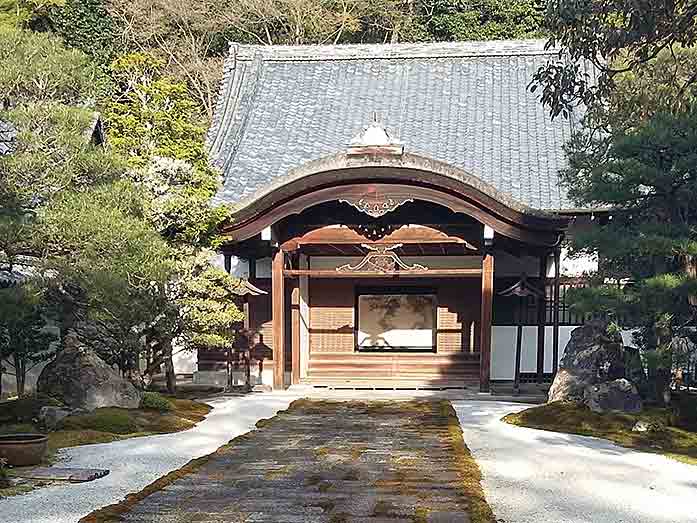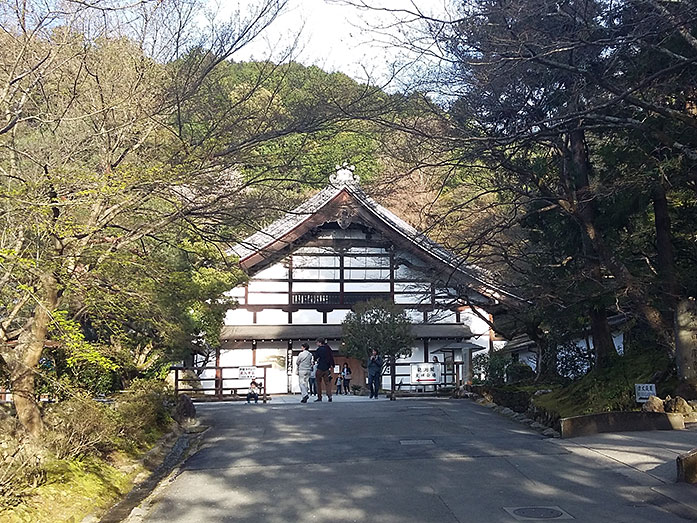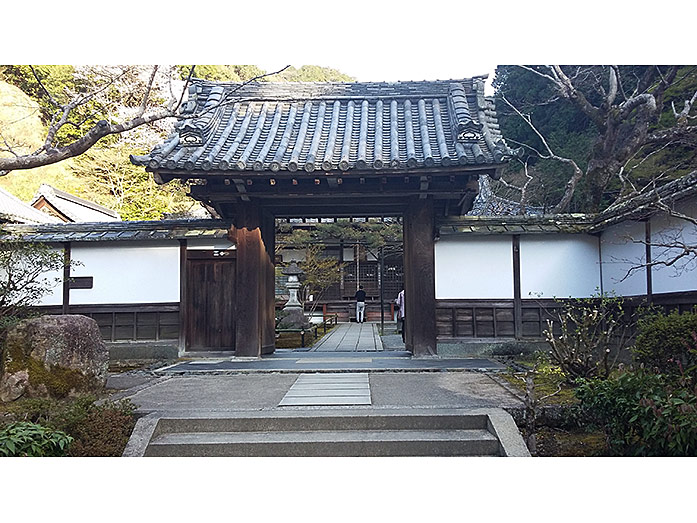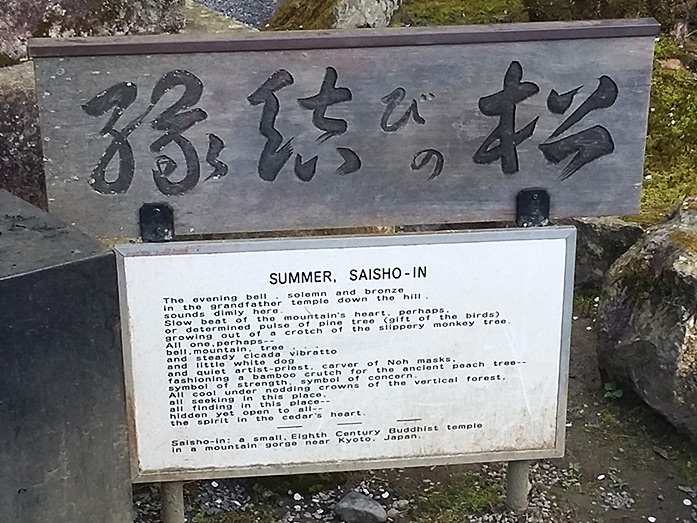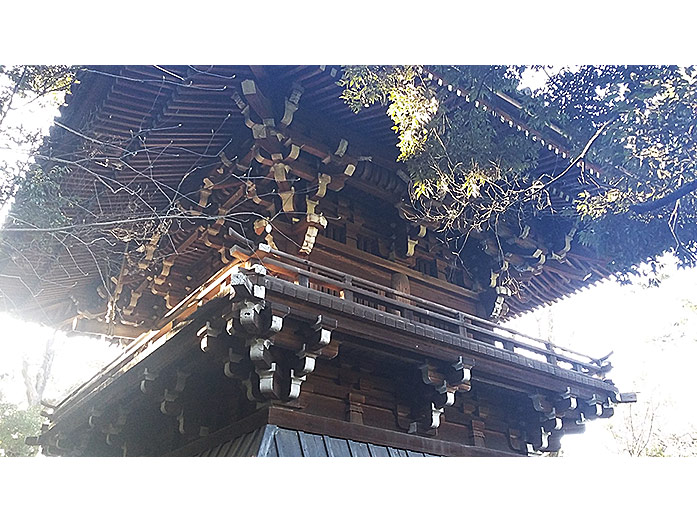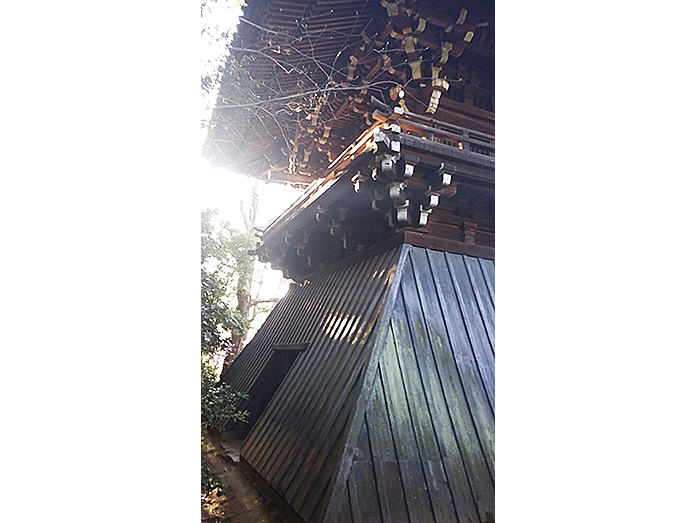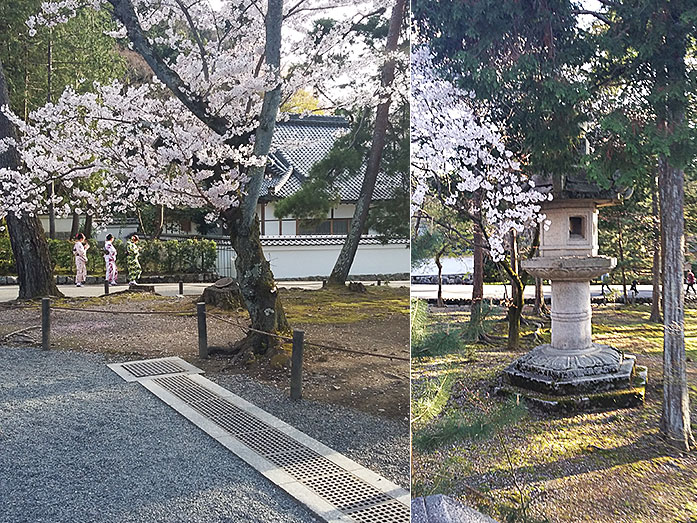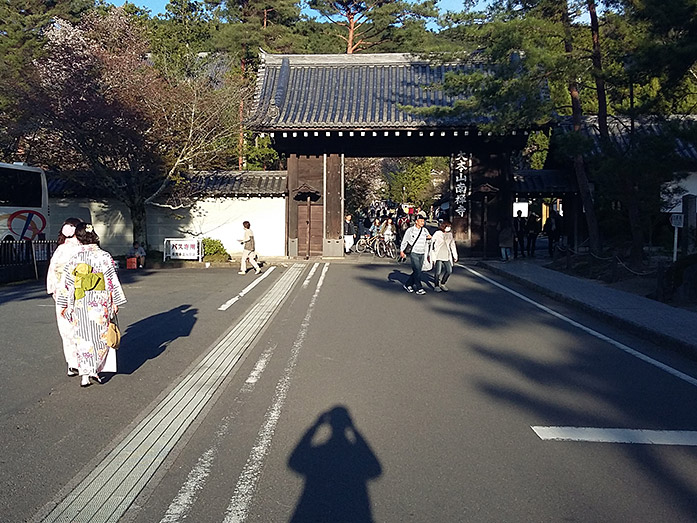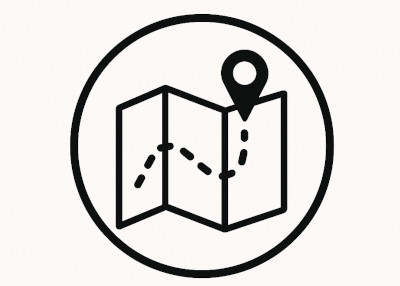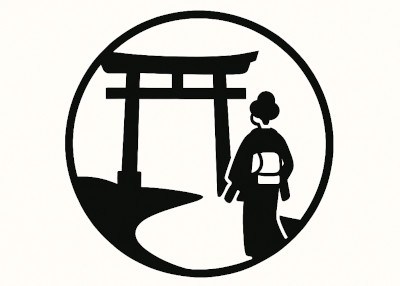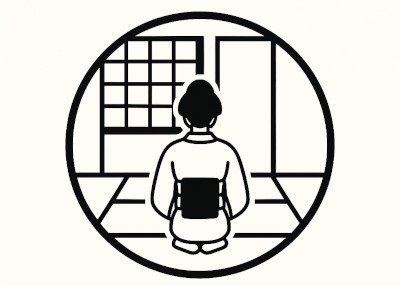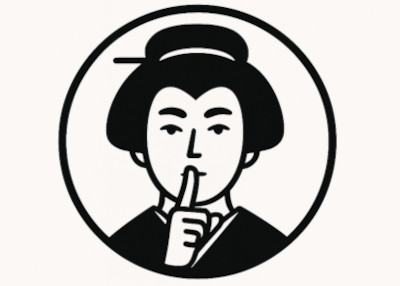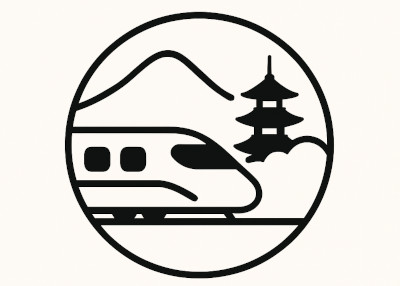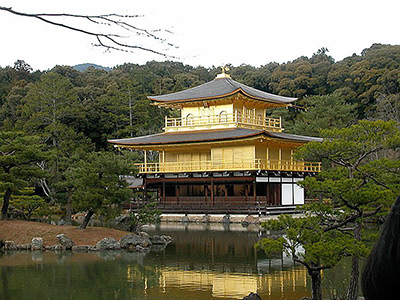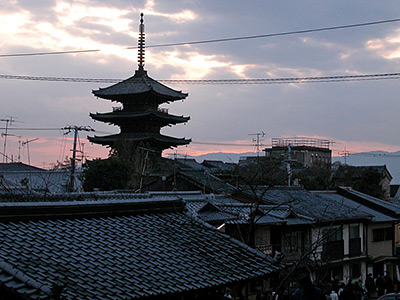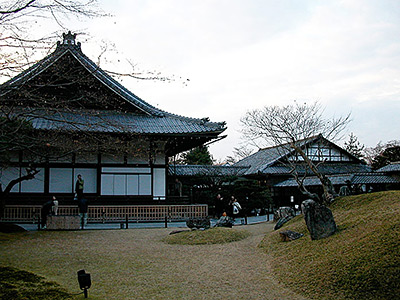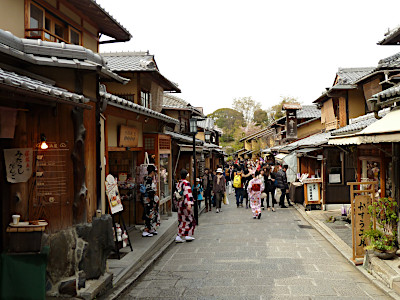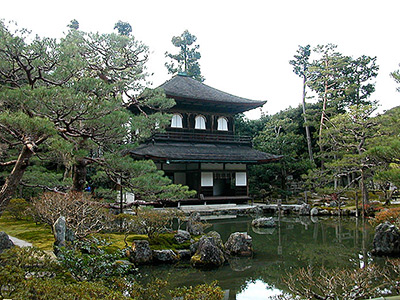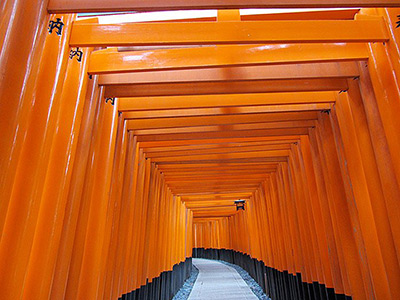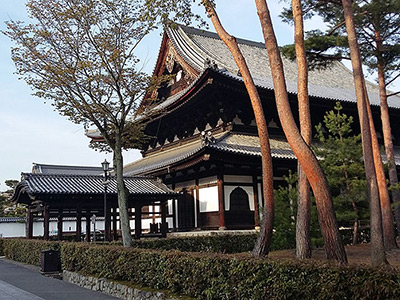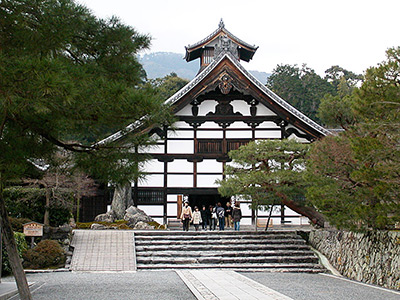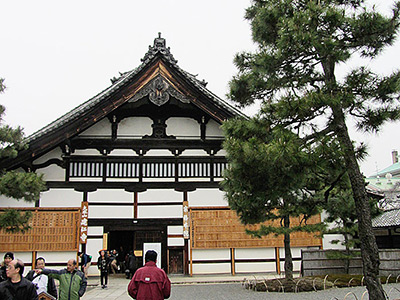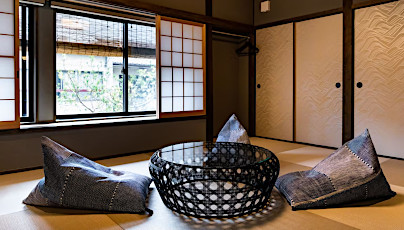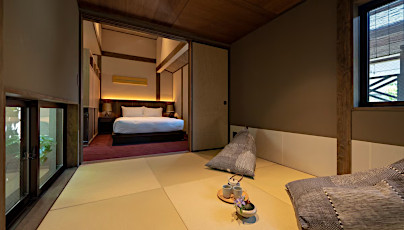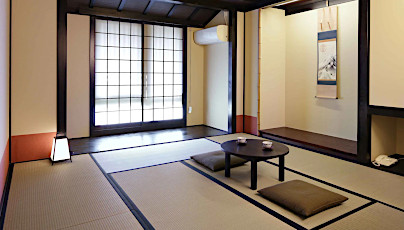Nanzenji Temple in Kyoto
This post can contain affiliate links, which means that we may receive a small commission if you make a purchase using these links.
Facts & Figures
Nanzenji, formerly known as Zenrinji, is a large Zen Buddhist temple complex in Kyoto. It is also one of the head temples within the Rinzai sect (one of three major Zen Buddhist sects in Japan). Nanzenji is the superior temple to the Five Great Zen Temples of Kyoto (Kyoto Gozan), which are Tenryu-ji, Shokoku-ji, Kennin-ji, Tofuku-ji, and Manju-ji. The area is a nationally designated Historic Site. The famous and huge two-story Sanmon Gate forms the main entrance of Nanzenji. It has a height of 22m and is part of the top three gates in Kyoto. The other two are the San-mon Gate at Chion-in Temple and the Goei-do-mon Gate at Higashi Hongan-ji Temple. Within the complex, there are in total 12 subtemples located like Konchi-in Temple, Tenjuan Temple, Nanzen-in Temple, and Hojo. The Hojo Gardens (Leaping Tiger Garden) received the title of a Place of Scenic Beauty. Through the vast grounds of the temple complex passes a 19th-century aqueduct. The aqueduct carried water from Lake Biwa to Kyoto. For sure not a sight you would expect in this place. Nanzenji is one of the most popular tourist spots in Kyoto. The temple was also featured in the movie Lost in Translation by Sofia Coppola.
- Hojo and Sanmon Gate:
- Opening Hours - 8:40 am to 5:00 pm (March - November, last entry 4:40 pm)
- Opening Hours - 8:40 am to 4:30 pm (December - February, last entry 4:10 pm)
- Closed: - December 28 to 31
- Admission Fee - 500 yen (Adults), 400 yen (High school students), 300 yen (Junior high and elementary school students)
- Konchi-in Temple:
- Opening Hours - 8:40 am to 5:00 pm (March - November, last entry 4:40 pm)
- Opening Hours - 8:40 am to 4:30 pm (December - February, last entry 4:10 pm)
- Closed: - open all year
- Admission Fee - 400 yen (Adults), 300 yen (High school students), 200 yen (Junior high and elementary school students)
- Nanzenin:
- Opening Hours - 8:40 am to 5:00 pm (March - November, last entry 4:40 pm)
- Opening Hours - 8:40 am to 4:30 pm (December - February, last entry 4:10 pm)
- Closed: - in December 28 to 31
- Admission Fee - 300 yen (Adults), 250 yen (High school students), 150 yen (Junior high and elementary school students)
- Tenjuan Temple:
- Opening Hours - 9:00 am to 5:00 pm (March - November)
- Opening Hours - 9:00 am to 4:30 pm (December - February)
- Closed: - open all year
- Admission Fee - 400 yen (Adults), 300 yen (High school students), 200 yen (Junior high and elementary school students)
History
Nanzenji started as a retirement villa for Emperor Kameyama (1249 – 1305) during the Kamakura period (1185 – 1333). The construction of his detached palace took till 1264. Later Emperor Kameyama lost much of his influence to political enemies and he focused more on studying Buddhism under Zen master Busshin Daimin Kokushi (1212 - 1292) also known as Mukan Fumon. Because of this influence, he donated the palace in 1291 and it was converted into a Zen Buddhist temple. In 1334, Nanzenji was ranked first among the Five Great Zen Temples of Kyoto. In 1385 Shogun Ashikaga Yoshimitsu (1358–1408) gave Nanzenji the highest rank of all, even above the Five Great Zen Temples. The temple complex was completely destroyed by fire in 1393, 1447, and during the Onin Civil War (1467 - 1477). Nanzenji was rebuilt in 1597 through a fundraising campaign of Ishin Suden (1569 – 1633), an influential Japanese Rinzai Zen monk and an advisor to Shogun Tokugawa Ieyasu (1543 - 1616). He was later appointed to be the chief abbot of Nanzenji. More and more buildings were added to the temple complex during the Edo period (1603 - 1868).
Location

Nanzenji is located close to Kyoto's Philosopher's Walk and Ginkakuji Temple.
Address: 86 Fukuchi-cho, Nanzen-ji, Sakyo-ku Kyoto, Kyoto Prefecture 606-8435, Japan
How to get to Nanzenji?
- 20min from Kyoto Station to Keage Subway Station by Tozai Line and
- 10min walk from Keage Subway Station to Nanzenji or
- 35min from Kyoto St. to Nanzenji-Eikando-michi bus stop by Kyoto City Bus Nr. 5 and
- 10min walk from Nanzenji-Eikando-michi bus stop to Nanzenji
Sightseeing spots within Nanzenji Temple complex
Top:
Sanmon Gate - The famous gate was built in 1628 by daimyo Todo Takatora (1556 – 1630). The two-story main gate honors the soldiers who died during the Civil War Oska Natsu-no-jin (1614 - 1615). The view from the upper floor is great and it can be easily accessed against a small entrance fee (500 yen).
Hodo Hall - The lecture hall can be found right behind the Sanmon Gate. It is the main hall of the temple complex. The last restoration of the building was done in 1909. Unfortunately, the place is not open to the public. Hodo contains statues of Bodhisattva and Buddha, like Monju-Bosatsu (Manjushri Bodhisattva), Shaka-Nyorai (Gautama Buddha) and Fugen-Bosatsu (Samantabhadra Bodhisattva). It is still possible to get from the outside a glimpse of the famous dragon in the clouds painting on the ceiling of the hall.
Hojo Hall - The abbot’s (head priest) quarters have the status of a National Treasure. It is a combination of two buildings. The larger one was moved in 1611 from the Kyoto Imperial Palace. The smaller one was originally built at the Fushimi Castle grounds in 1624 - 1644 and later moved to Nanzenji. Hojo is most famous for its over 100 paintings on the sliding doors (fusuma-e) by artists of the Kano school, like Kano Motonobu (1476 – 1559) and Kano Eitoku (1543 – 1590) and the beautiful rock garden. Hojo and Hodo Hall are connected by a covered walkway.
Gardens of Hojo Hall - The well-known artist and garden designer Kobori Masakazu better known as Kobori Enshu (1579 - 1647) was responsible for the layout of the dry landscape garden next to the larger building. He also created the gardens for Nijo Castle, the Imperial Palace in Kyoto, and Osaka Castle. Since 1951 the garden with the name - Leaping Tiger Garden - has the status of a National Site of Scenic Beauty. The combination of big rocks, raked gravel, and green moos is outstandingly beautiful. Next to the smaller building is another dry landscape garden located. In 1966 the layout was created by priest Zenkei Shibayama (1894 – 1974), a former abbot of the Nanzenji Temple.
Nanzenin Temple - This subtemple of Nanzenji includes a small hall, the enshrined statue and mausoleum of Emperor Kameyama (1249 - 1305), and a beautiful strolling garden with a pond (Sogen-ike Pond) at its center. The Nanzenin Garden has the status of a National Place of Scenic Beauty and as a Historic Site. The temple stands at the spot where the detached palace of Emperor Kameyama was constructed.
Konchi-in Temple - It is one of the small subtemples of Nanzenji. Shogun Ashikaga Yoshimochi (1386 - 1428) gave the order for the construction at the beginning of the 15th century. Konchi-in was relocated in 1605 from the northern part of Kyoto to its current place. The garden there is considered one of Japan's finest and was created between 1611 and 1632 by Kobori Enshu (1579 - 1647). Read more >
Suirokaku Water Bridge - The aqueduct is part of the Lake Biwa Canal and was constructed during the Meiji Period (1868 - 1912). It is used to this day as the major freshwater source for Kyoto. The red brick construction is really an unusual sight within the Nanzenji temple grounds.
Tenjuan Temple - This subtemple is dedicated to the Zen master of Emperor Kameyama. Do not miss the impressive rock and pond garden at the temple grounds.
Festival & Events (dates can change without notice)
April
Miyako Odori (1st - 31th)
The traditional annual spring dance of the Kyoto district Gion Kobu performed by Geiko and Maiko is a must-see on your Kyoto visit. Don't miss the most popular dances the Miyako Odori "Cherry Blossom Dances" or "Dances of the Old Capital" at the Gion Kobu Kaburenjo Theater (located close to Gion Corner).
May
Aoi Matsuri (15th)
The highlight of this festival is a large parade from the Imperial Palace through the Shimogamo Shrine and ends at the Kamigamo Shrine (Kamigamo-jinja). More than 500 people wearing aristocratic costumes from the Heian Period (794 - 1185). The Aoi Matsuri belongs with the Gion Matsuri and Jidai Matsuri to the three most famous festivals in Kyoto.
July
Gion Matsuri (whole month)
The month of July is full of different events like the Yoiyama - Kyoto's Magical Night (locals in kimonos look at the giant Gion floats the day before the parade) or the famous Yamaboko Junko (float procession on the 17th of July).
October
Jidai Matsuri ("Festival of Ages") (22nd)
People celebrate with a large parade between Imperial Palace to Heian Shrine the anniversary of the foundation of Kyoto. App. 2000 participants wearing historical costumes from different time periods. Enjoy this great festival which lasts around 2 hours.
Where to stay in Kyoto?
Book your Flight Tickets and Rental Car for your Japan trip
Day trips from Kyoto:
Travelers who viewed Nanzenji viewed also:
Top rated - Best Machiya Houses in Kyoto
THE MACHIYA Ebisuya, 192 Ebisuya-cho Shimogyo-ku, Kyoto 600-8062
This 3-star guesthouse got an excellent rating. All 30 individually furnished rooms offer free WiFi, air conditioning, bathrooms incl. toilets, fridges, 40-inch flat-screen TVs, and more. THE MACHIYA Ebisuya is located in central Kyoto.
View on Expedia.com
This 3-star guesthouse got an excellent rating. All 30 individually furnished rooms offer free WiFi, air conditioning, bathrooms incl. toilets, fridges, 40-inch flat-screen TVs, and more. THE MACHIYA Ebisuya is located in central Kyoto.
View on Expedia.com
The Machiya Kazahaya, 570-6 Kazahayacho, Shimogyo-ku, Kyoto, Kyoto, 600-8475
The Machiya Kazahaya offers for all guest rooms free WiFi, air conditioning, safes, bathrooms with toilets, refrigerators, and much more. Enjoy also the beautiful Japanese Garden. Guests gave this property the rating - Exceptional.
View on Expedia.com
The Machiya Kazahaya offers for all guest rooms free WiFi, air conditioning, safes, bathrooms with toilets, refrigerators, and much more. Enjoy also the beautiful Japanese Garden. Guests gave this property the rating - Exceptional.
View on Expedia.com
Kyomachiya Ryokan Sakura Urushitei, 425 Kichimonjicho, Shimogyo-ku, Kyoto, 600-8069
This beautiful 3-star guesthouse offers 32 rooms with free WiFi, air conditioning, bathrooms incl. showers and toilets, refrigerators, and much more. Enjoy also the relaxing indoor public bath (no minerals). Guests gave this property the rating - Wonderful.
View on Expedia.com
This beautiful 3-star guesthouse offers 32 rooms with free WiFi, air conditioning, bathrooms incl. showers and toilets, refrigerators, and much more. Enjoy also the relaxing indoor public bath (no minerals). Guests gave this property the rating - Wonderful.
View on Expedia.com

